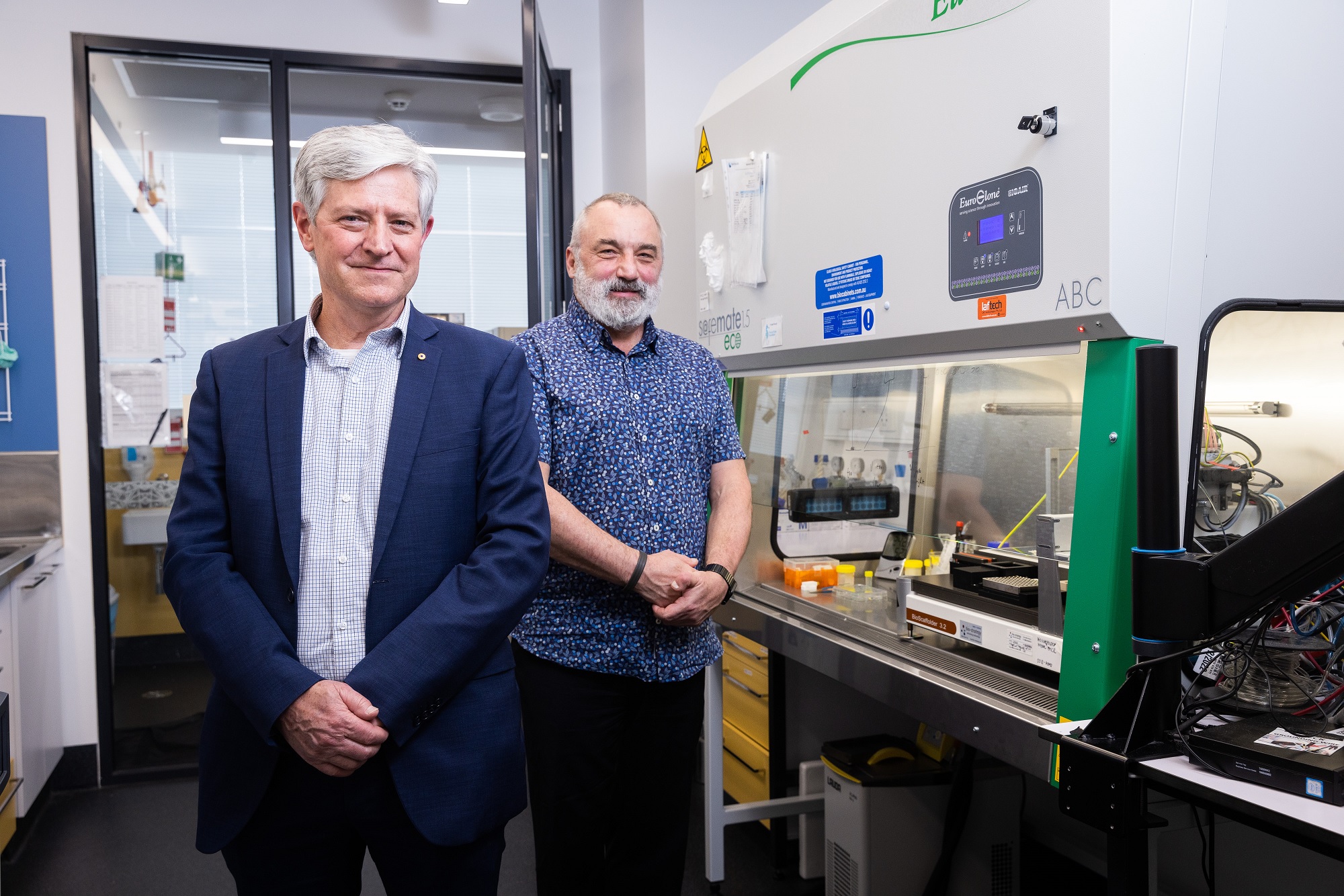Melbourne researchers work on artificial skin solution

Pictured: Associate Professor Chris Baker (L) and Professor Robert Kapsa at the ACMD BioFab lab
A 3D-printed model capable of producing artificial skin is part of a globally innovative research project being developed through the Aikenhead Centre for Medical Discovery (ACMD), located at St Vincent’s Hospital Melbourne.
Led by St Vincent’s and RMIT University, in collaboration with the University of Melbourne, the project aims to create the core three layers of human skin into a novel synthetic tissue with addition of the patient’s own cells.
This innovative technique is hoped to produce a biofabricated skin that will avoid rejection and rapidly repair wounds, minimising scarring.
Potential applications for this 3D-printed material include repairing lost or damaged skin in the treatment of burns, trauma and cancer patients, where often large areas of skin can be affected and treatment options are limited.
“It is hoped that biofabricated skin, when available, will improve the quality of life for patients with skin loss from trauma and chronic disease, with far more natural outcomes,” said Associate Professor Chris Baker, Director of Dermatology at St Vincent’s Hospital Melbourne, who is jointly leading the project with Robert Kapsa, Professor of Biofabrication and Tissue Engineering at RMIT University.
Ground-breaking potential
Part of the process being investigated through this study involves manufacturing bio-inks that can be used in a 3D bio-printer to produce an artificial material with similar properties to human skin, including collagen and elastin.
“We hope this means it will not only look like skin but feel natural as well and function in the same way,” said A/Prof Baker.
Initial applications are also investigating using the material in the testing of medications and cosmetics.
“By producing artificial human skin, it may provide an alternative way of testing topical drugs and cosmetics to gain realistic results without the need for using animal models,” said A/Prof Baker.
Another key application being explored is using the artificial material to create surgical dressings that could help speed up the healing process and benefit patients in the long-term by possibly reducing scarring.
“Ultimately, we are hopeful of getting to a stage where biofabricated skin can be integrated with other engineered tissues such as muscle, nerves or bone to repair damaged limbs or other body structures– that’s just one of the potential long-term gains,” said A/Prof Baker.
The project has received funding from the F & E Bauer Foundation and is at early-stage model development.